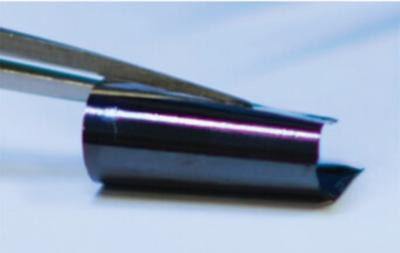Researchers from Tohoku University, Tianjin University of Technology, Pohang University of Science and Technology and Johns Hopkins University recently designed a nanocellular graphene (NCG) film through the self-organization of carbon atoms using liquid metal dealloying and employing a defect-free amorphous precursor.
The flexible freestanding nanocellular graphene film. Image credit: Advanced Materials
Nanocellular graphene is a specialized form of graphene that achieves a large specific surface area by stacking multiple layers of graphene and controlling its internal structure with a nanoscale cellular morphology. NCG is attractive thanks to its potential to improve the performance of electronic devices, energy devices and sensors. However, its development has been hindered by defects that occur during the manufacturing process. Cracks often appear when forming NCG, and scientists are looking for new processing technologies that can fabricate homogeneous, crack-free and seamless NCGs at appropriate scales.
This recent study demonstrates that a Bi melt strongly catalyzes the self-structuring of graphene layers at low processing temperatures. The robust nanoarchitectured graphene displays a high-genus seamless framework and exhibits remarkable tensile strength (34.8 MPa) and high electrical conductivity (1.6 × 104 S m−1). This unique material has excellent potential for flexible and high-rate sodium-ion battery applications.
The team discovered that carbon atoms rapidly self-assemble into crack-free NCG during liquid metal dealloying of an amorphous Mn-C precursor in a molten bismuth. Dealloying is a processing technique that exploits the varying miscibility of alloy components in a molten metal bath. This process selectively corrodes certain components of the alloy while preserving others.
The researchers demonstrated that NCGs developed by this method exhibited high tensile strength and high conductivity after graphitization. Moreover, they put the material to the test in a sodium-ion battery (SIB). They used the developed NCG as an active material and current collector in a SIB, where it demonstrated a high rate, long life and excellent deformation resistance. Ultimately, their method of making crack-free NCG might make it possible to raise the performance and flexibility of SIBs - an alternative technology to lithium-ion batteries for certain applications, particularly in large-scale energy storage and stationary power systems where cost, safety, and sustainability considerations are paramount.


